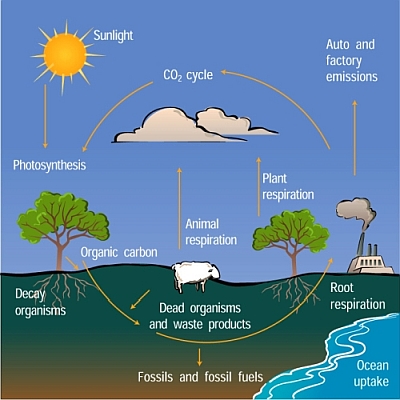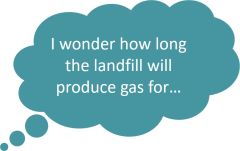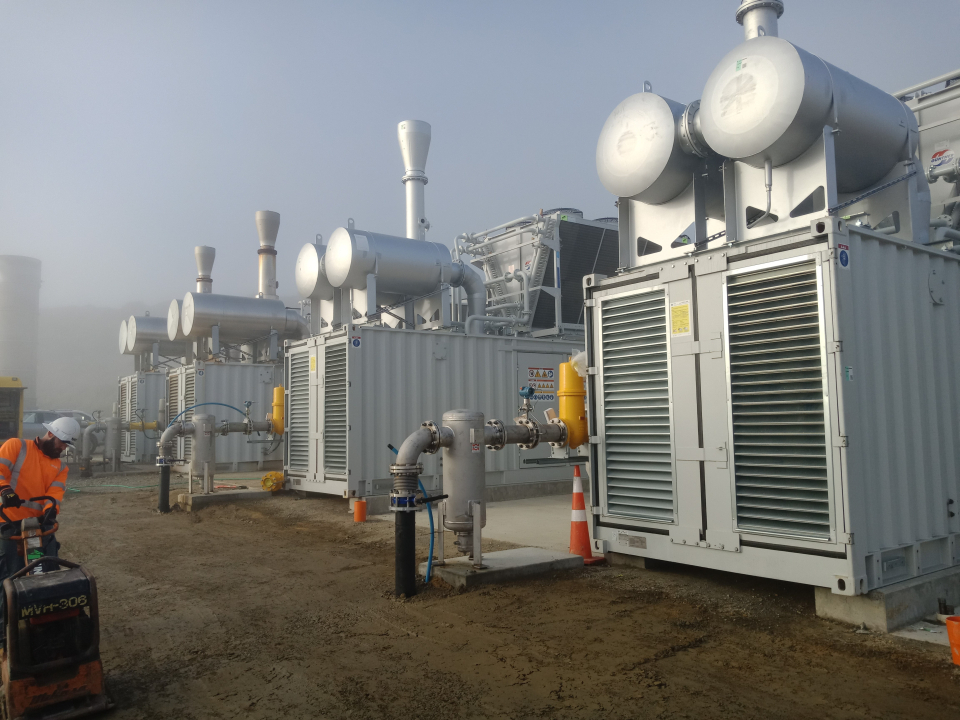Organic waste and landfills
What is organic waste?
Organic waste is anything that was once living or made from something that was living eg food, garden and lawn clippings, animals and animal waste, paper, cardboard and timber.
Organic waste and landfills - like a big biodigester!
A biodigester is like a mechanical stomach. It is fed with organic material, which is broken down (decomposed) by micro-organisms (bacteria) in an oxygen-free (anaerobic) environment. The same thing happens when organic waste is put into a landfill. This process produces a liquid called leachate, and renewable energy called biogas (methane and carbon dioxide). Both of these are greenhouse gases.
- Heather’s Small Scale Biodigester – YouTube video showing how a small home biodigester works.
- Landfills for the future – Blog with information and comments on modern landfills as energy producing facilities.
- A Modern Landfill – enlargement of the diagram in the above blog. Shows a similar system to Kate Valley Landfill.

The carbon cycle
Carbon from the atmosphere gets locked up by plants (in photosynthesis) and released back into the atmosphere either quickly (by respiration) or slowly by decomposition (eg breakdown of organic materials) or burning of fossil fuels. Methane is one of the carriers of carbon from organic material to the atmosphere so it’s part of the natural carbon cycle.
Carbon naturally moves from one part of the Earth to another through the carbon cycle. However, human activity is adding carbon to the atmosphere (in the form of carbon dioxide and methane) faster than natural processes can remove it. That is why the amount of carbon dioxide and methane in the atmosphere is increasing, which is causing the earth to warm and the climate to change.
This diagram of the carbon cycle shows how carbon is cycled between the air, oceans, ground and living things:

Greenhouses gases and the greenhouse effect
Greenhouse gases are found naturally in the atmosphere and keep our Earth warm enough to support life. They include water vapour, CO2, methane, and some others.
The Earth gets energy from the Sun in the form of sunlight. The Earth's surface absorbs some of this energy and heats up. That is why the surface of a road can feel hot even after the sun has set, because it has absorbed heat from the sun.
The Earth cools down by giving off a different form of energy called infrared radiation. However, before all this radiation can escape to outer space, greenhouse gases in the atmosphere absorb some of it, which makes the atmosphere warmer. As the atmosphere becomes warmer, it also makes the Earth's surface warmer, a bit like a greenhouse.
Planets without greenhouse gases get very hot when the sun shines on them but extremely cold at night time.
The Earth needs greenhouse gases to trap heat but if these gases increase too much the atmosphere will continue to get warmer, resulting in ‘global warming’. Carbon dioxide is the greenhouse gas you hear people talking about the most. That is because we produce more carbon dioxide than any other greenhouse gas and it is responsible for most of the warming. Greenhouse gases come from all sorts of everyday activities, such as heating our homes and driving around town.
The graph below shows the major greenhouse gases that are produced from human activity:

Methane
Besides CO2, another important greenhouse gas is methane (CH4). Methane is produced by bacteria that breaks down organic matter. You would expect landfills to create lots of methane - and they do!
Methane is an interesting (but bad) gas:
- It is over 25 times more harmful as a greenhouse gas than carbon dioxide.
- It can kill you if you breathe it (because it stops you absorbing oxygen).
- It is very explosive.
Methane is, however, a valuable resource. Methane contains lots of energy:
- Energy from the sun is absorbed by plants to make food.
- Some of this food is eaten by animals.
- Plants and animals and products made from them (eg paper, cardboard, timber, woollen carpets) all becomes organic waste.
- When organic waste is broken down in a landfill they make leachate, CO2 and methane.
At Kate Valley the methane is collected through a network of wells and pipes then used to create electricity.
The pipes take the gas to large generators that produce 4 Megawatts of electricity each year. That electricity is fed into the national grid.
- Some large homes use 10 Kilowatts (10,000 watts) of electricity each year.
- So, 1 Megawatt (1,000,000 watts) of electricity would keep 100 houses in electricity for a year.
- How many large houses could run on the Kate Valley 4 Megawatt generation plant?

Closing the loop
Kate Valley landfill controls the gas that comes from the breakdown of organic waste. This is called a ’Gas Management System’. Not only does it stop harm to the atmosphere, it also generates electricity from waste, a renewable resource.
The electricity created by organic waste at the landfill is being used to fuel new electric vehicles that collect waste - how cool is that!
Kate Valley will produce gas for several decades from now.

- For more on electric vehicles, watch these Waste Management videos called Our First Electric Waste Truck hits the Road and Powering into the Future.








